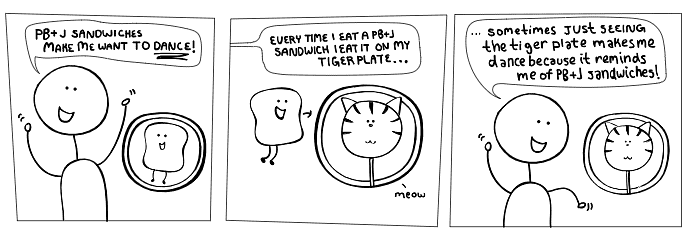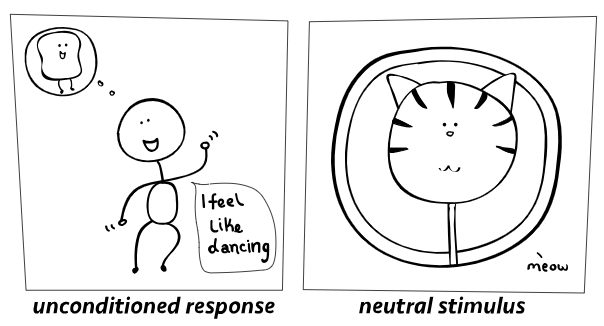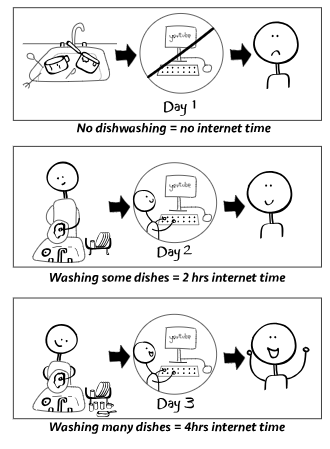MCAT Exam > MCAT Notes > Psychology and Sociology for MCAT > Classical and Operant Conditioning
Classical and Operant Conditioning | Psychology and Sociology for MCAT PDF Download
Introduction
Conditioning plays a crucial role in learning, connecting triggers or stimuli to human behavior or responses. When the field of psychology was in its early stages, scientists focused on observing behaviors as a means to understand the inner workings of the human mind. Through numerous experiments, researchers developed major theories of learning. In this article, we will explore classical conditioning and operant conditioning, along with real-life examples, to gain a deeper understanding of these concepts.
Classical Conditioning: Linking Stimuli and Responses
- Classical conditioning involves the association of a neutral stimulus with an unconditioned stimulus to create a conditioned response. To illustrate this concept, imagine your favorite snack is a peanut butter and jelly sandwich. Every time you enjoy this snack, it brings you happiness, prompting you to perform your joyous PB&J dance. Interestingly, your sandwich always arrives on a specific plate—an orange plate with a picture of a tiger.

- Initially, the sandwich serves as an unconditioned stimulus that naturally triggers the dance, which is the unconditioned response. However, the plate is initially a neutral stimulus, eliciting no reaction on its own. Over time, through repeated pairing with the sandwich, the plate becomes a conditioned stimulus, evoking a conditioned response—the happy dance. This association between the plate and the feelings of happiness is learned through classical conditioning.
- Moreover, the initial reason for dancing at the sight of the sandwich stems from the sandwich itself being an unconditioned stimulus. The sheer pleasure derived from consuming the sandwich leads to the reflexive dance. Eventually, an association between the visual stimulus (sight of the sandwich) and the taste (unconditioned stimulus) is formed through classical conditioning. Consequently, the mere sight of the sandwich becomes sufficient to trigger the joyful dance.

Operant Conditioning: Altering Behaviors through Consequences
- While classical conditioning focuses on stimuli preceding behaviors, operant conditioning revolves around the consequences that follow behaviors. In operant conditioning, behaviors are modified through varying consequences. For instance, imagine you are striving to become a responsible roommate who consistently washes their dishes. In your shared living space, the rule is that the person with the longest unwashed dishes must take out the trash—an undesirable chore.
- To motivate yourself to wash your dishes promptly, you develop a system. Every time you remember to wash your plate, you earn the privilege to surf the internet. In this scenario, washing the dishes represents the desired behavior. Initially, you may leave your plate unwashed a few times, but gradually you begin to remember after a day or so, eventually reaching a point where you wash your dishes immediately after use. This process, known as shaping, involves intermediate behaviors (leaving the plate unwashed and then returning to wash it within hours) that lead to the ultimate goal behavior (washing the dishes promptly).

Influencing Behavior through Reinforcement and Punishment
Operant conditioning employs reinforcement and punishment as means to influence behavior. These consequences can be either positive or negative in nature. Positive consequences involve adding a stimulus, whereas negative consequences involve removing a stimulus. The following four types of operant conditioning-based consequences can impact behavior:
- Positive reinforcement: This type of consequence adds a new stimulus to increase the occurrence of a desired behavior. In the dishwashing example, if you remember to wash your plate, you receive permission to make an online purchase—an added stimulus that reinforces the behavior.
- Negative reinforcement: With negative reinforcement, an old stimulus is removed to encourage the repetition of a desired behavior. In the dishwashing scenario, remembering to wash your plate exempts you from taking out the trash—an old stimulus that is eliminated.
- Negative punishment: Negative punishment entails removing a stimulus to decrease the frequency of an undesired behavior. If you leave your dish on the table without washing it, you may face the consequence of not being able to enjoy your usual apple pie dessert—an old stimulus that is taken away.
- Positive punishment: Positive punishment involves adding a new stimulus to discourage an undesired behavior. Suppose you leave your dish unwashed; as a consequence, you are assigned a new chore, such as sweeping the floors—an added stimulus that acts as punishment.
Effectiveness of Conditioning: Generalization, Discrimination, and Extinction
- In classical conditioning, the concepts of generalization, discrimination, and extinction come into play. Generalization refers to the occurrence of a conditioned response to a stimulus similar to the original conditioned stimulus. Suppose your tiger plate, which was the original conditioned stimulus, is part of a set of jungle cat plates, including a lion, a jaguar, and a leopard. Since these plates share similar characteristics, you respond with the same happy dance to all of them. This is an example of generalization, where your conditioned response expands to encompass similar stimuli.

- On the other hand, discrimination is the ability to differentiate between different stimuli and respond only to specific ones. For instance, you show discrimination by not dancing when you see the peanut butter and pickle jars, as you can distinguish between them. Similarly, you dance only during snack time because you associate the PB&J with that specific period.
- Extinction occurs when a conditioned response disappears due to the absence of reinforcement or association. Suppose you run out of peanut butter, and you are left with tuna salad for weeks. Initially, your parents serve the tuna salad on your favorite tiger plate, attempting to make it more appealing. However, you quickly realize that the tiger plate no longer signifies PB&J, leading to the extinction of the association between the plate and the happy dance. However, once peanut butter is reintroduced into your household, and your parents serve you a PB&J on the tiger plate, the previous association rapidly resurfaces—a phenomenon known as spontaneous recovery.
Conditioning in Everyday Life
Conditioning, both classical and operant, manifests in numerous aspects of daily life. Consider the practices of insurance companies. They may increase your premiums if you frequently get into accidents, employing negative punishment. Conversely, they might reward safer driving with congratulatory certificates, implementing positive reinforcement. Furthermore, while driving, seeing flashing lights in your rearview mirror and hearing a siren can instantly trigger a feeling of dread, even before the officer approaches your vehicle. These conditioned stimuli have become associated with the unconditioned stimuli of receiving tickets and fines, resulting in a conditioned response manifested as a physical sensation in the stomach.
Conclusion
Conditioning, whether classical or operant, plays a fundamental role in learning and shaping behavior. Classical conditioning involves linking stimuli and responses, while operant conditioning focuses on consequences to modify behaviors. Through reinforcement and punishment, behavior can be influenced positively or negatively. Understanding concepts like generalization, discrimination, and extinction provides insights into how associations are formed and how behaviors change over time. By recognizing examples of conditioning in our daily lives, we can appreciate the profound impact it has on our actions and even explore ways to utilize these techniques for self-improvement.
The document Classical and Operant Conditioning | Psychology and Sociology for MCAT is a part of the MCAT Course Psychology and Sociology for MCAT.
All you need of MCAT at this link: MCAT
|
339 videos|14 docs|42 tests
|
Related Searches





















